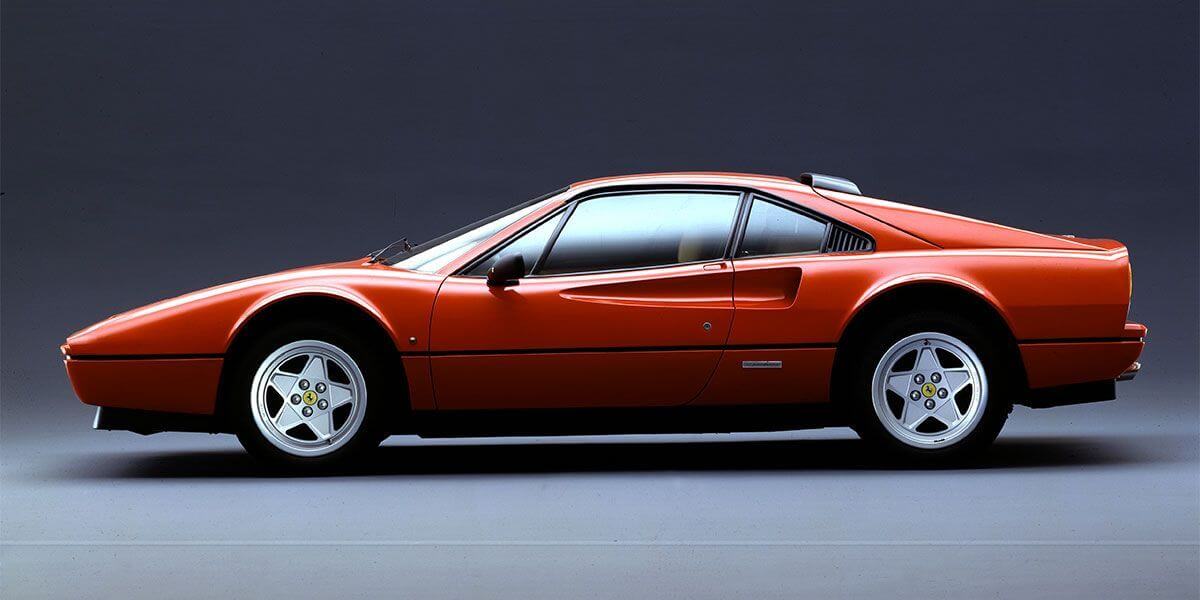
The Ferrari 328 was an evolution, not a revolution—a carefully refined update to the beloved 308, the car most people associate with Magnum P.I. and an era of supercars that were fast, beautiful, and just a little bit wild. But while the 328 may not have grabbed headlines with bold new tech or outlandish styling, it quietly perfected the formula Ferrari had been working on for years.
This wasn’t a flashy leap into the future; it was Ferrari getting the details right—tweaking the engine, improving reliability, making it easier to live with day to day, and ensuring it was more than just a poster on a bedroom wall. The result? A V8 supercar that could handle the demands of real-world driving without losing an ounce of the excitement.
In this article, we’ll explore how the Ferrari 328 cemented its place in the V8 supercar lineup, why it’s still a favorite among collectors, and how it took everything great about the 308 and made it better without breaking a sweat.
The Birth of the Ferrari 328
By the mid-1980s, Ferrari was in a bit of a dilemma. The 308 was iconic, beloved, and thanks to a certain Hawaiian-shirt-wearing private investigator, pretty much immortalized on TV screens everywhere. But it had been around for nearly a decade—in car terms, that’s a lifetime. Competitors were stepping up their game, technology was marching on, and Ferrari needed to refresh its V8 supercar lineup without losing what made it great in the first place.
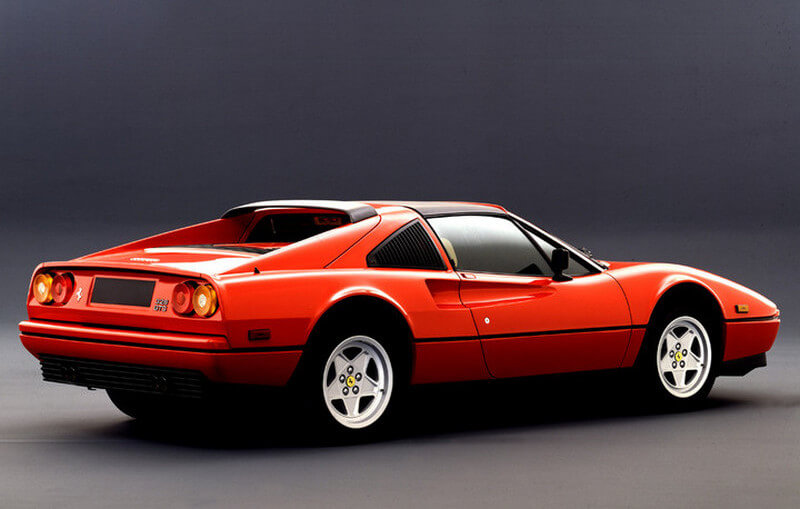

Enter the Ferrari 328. Not a revolution—because, let’s be honest, Ferrari didn’t need one—but a smart evolution. In 1985, Ferrari unveiled the 328 at the Frankfurt Motor Show as the logical successor to the 308. It wasn’t a ground-up redesign, but it didn’t need to be. Ferrari knew it had a winning formula; it just had to make it better.
The key was refinement. Ferrari took what worked in the 308 and polished it to a near-perfect sheen. The engine? Slightly bigger, yes, but more importantly, it was more reliable. It tweaked the camshafts, redesigned the pistons, and slapped in a new Marelli Microplex ignition system. The result was smoother power delivery and an engine that could take a bit more of a beating without throwing a tantrum every 5,000 miles.
And here’s where things get interesting: unlike previous Ferraris, the 328 didn’t require you to practically dismantle the car to service it. The engine could stay where it belonged—inside the car—making maintenance far less of a headache. For a Ferrari, that’s as revolutionary as it gets.
In short, the 328 wasn’t about making headlines with radical changes. It was about perfecting the formula, fine-tuning the details, and creating a car that felt just right. Oh, and it still had that glorious mid-engine V8 setup, of course.
The V8 Power Behind the Ferrari 328
At the core of the Ferrari 328 was its naturally aspirated 3.2-liter V8—a masterpiece that delivered everything you’d expect from a Ferrari: power, responsiveness, and that glorious soundtrack that made even casual drives feel like a race day. But this wasn’t just a recycled 308 engine with a slight tweak. Ferrari made smart changes that took performance up a notch, ensuring the 328 was ready to hold its own in a fast-evolving supercar world.
A Bigger, More Potent V8
Ferrari didn't just play around with the old V8; it gave it a proper upgrade. Based on the 308 Quattrovalvole, the 328’s engine saw its displacement bumped up from 3.0 to 3.2 liters by increasing the bore and stroke. A seemingly small tweak, but one that made a significant difference—output jumped to 270 horsepower and 231 lb-ft of torque.
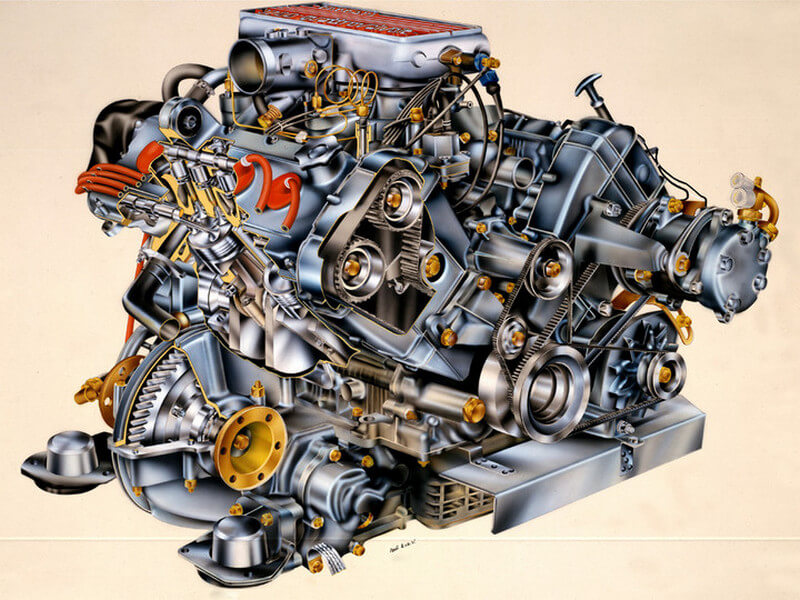

And it wasn’t just about the numbers. The thrill came from how that V8 delivered its power. With peak performance hitting at 7,000 RPM, the engine demanded to be revved, rewarding drivers with razor-sharp response and no turbo lag. The power delivery was pure and linear—just how a naturally aspirated Ferrari should be.
All this, coupled with the car’s lightweight construction (around 2,784 pounds or 1,263 kg), meant the 328 could launch from 0 to 60 mph in 5.5 seconds—a time that put many of its competitors to shame. With a top speed of 166 mph, Ferrari clearly refined both the engine and aerodynamics, making the 328 more than just a pretty face.
Smooth Power Delivery with Modern Tech
Ferrari also made sure the 328's V8 was more than just raw power—it was about precision. One of the key upgrades was the Marelli Microplex electronic ignition system, which brought better control over timing and spark delivery. The result? A smoother, more reliable engine that fired efficiently, delivering consistent power throughout the rev range.
Paired with the Bosch K-Jetronic fuel injection system, the engine not only performed better but also ran cleaner. With emissions regulations tightening, especially in the U.S. and Europe, Ferrari managed to meet these standards while still delivering that high-revving Ferrari experience we all know and love.
A 5-Speed Manual Complementing the V8
Of course, part of what makes a Ferrari special is the way it interacts with the driver, and the 328’s 5-speed manual gearbox was a prime example. That iconic gated shifter, with its metallic click-clack sound, turned even routine gear changes into something to savor. Sure, mastering it required a bit of finesse, but once you got it, the reward was a driving experience that felt deeply connected.
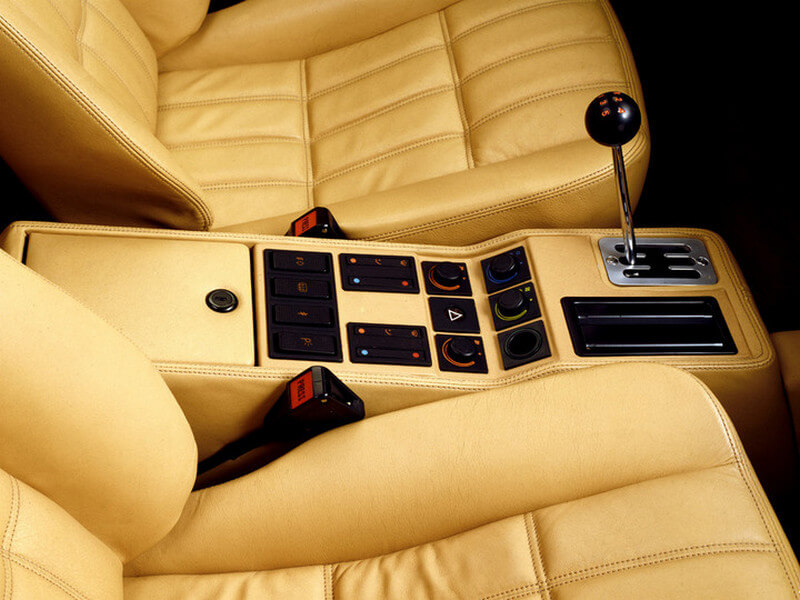

The shift to a hydraulic clutch over the older cable-operated system also made life a bit easier for 328 owners. The lighter pedal action meant you could tackle city driving or long road trips without your left leg feeling like it had done a workout—without sacrificing that mechanical, hands-on driving feel Ferrari drivers crave.
Advanced Suspension and ABS to Handle the Power
It’s not just about straight-line speed with Ferrari—it’s how the car handles when you throw it into a corner. The Ferrari 328 delivered thanks to its independent double-wishbone suspension at all four corners. Coil springs and Koni telescopic dampers struck the right balance between feedback and comfort, while anti-roll bars helped keep the car flat and stable during hard cornering.
And then there were the brakes—vented disc brakes on all four wheels provided serious stopping power, handling the heat of hard driving with ease. In 1988, Ferrari took it a step further by offering ABS as an option for the first time in their V8 lineup. This wasn’t just a modern safety feature; it genuinely improved the handling, giving the 328 more predictability under hard braking, even in tricky conditions.
Design and Aesthetic Impact of the Ferrari 328
The Ferrari 328 is more than just a pretty face—though, let’s be honest, its beauty is undeniable. Pininfarina, the design house behind so many of Ferrari’s icons, didn’t just take the 308 and dust it off. It refined it, shaping the 328 into something more elegant, more modern, and a touch less aggressive but still unmistakably Ferrari.
Softening the Wedge and Streamlining the Look
Back in the ‘70s, wedge-shaped supercars were all the rage, and the 308 was right in the middle of it with sharp, angular lines that looked fast even when parked. But by the mid-1980s, car design was evolving, and Ferrari wasn’t going to be left behind. The 328 kept the low, wide, mid-engine proportions that made the 308 so striking, but Ferrari softened the edges, moving towards a sleeker, more aerodynamic profile.
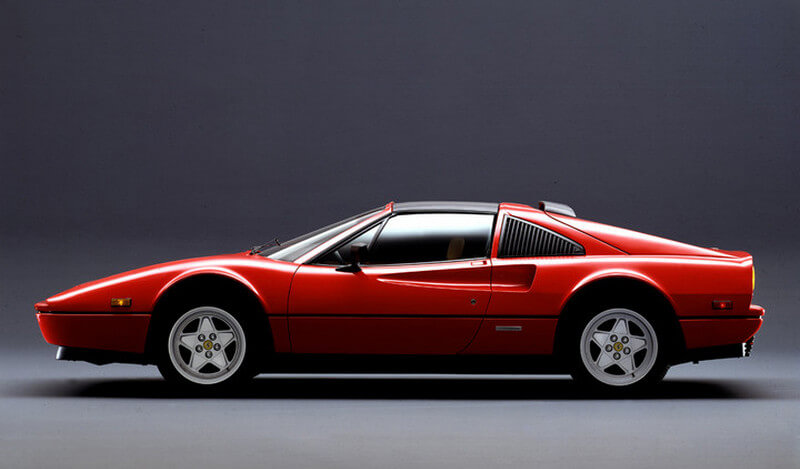

The nose of the 328 was more curved, which didn’t just look better—it helped with aerodynamics. And then there were the bumpers: gone were the black rubber ones from the 308, replaced by body-colored bumpers that seamlessly blended into the car’s shape. It might seem like a small change, but it gave the 328 a more cohesive, polished look that tied it neatly into Ferrari’s other models, like the Mondial 3.2.
Goodbye to the Vents, Hello to the Louvers
One of the biggest visual changes Ferrari made on the 328 was ditching the cooling vents behind the retractable headlights—those vents may have been functional, but they disrupted the flow of the car’s lines. Instead, Ferrari’s designers went with larger louvers on the front lid, which not only did the job but also became one of the car’s signature features.
The louvers weren’t just for show. They appeared at the rear, too, giving the 328 a streamlined, purposeful look without losing that aggressive edge Ferrari fans expect.
Small Details, Big Impact
Ferrari didn’t just focus on the big stuff; it got the small details right too. Take the door handles. On the 308, they were bulky and stuck out like a sore thumb. On the 328? Recessed, body-colored, and much cleaner. Even the wing mirrors got a modern update, with matt black mirrors nodding to the growing trend of blacked-out exterior components in the 1980s.
These might sound like minor tweaks, but they made a world of difference. Every inch of the 328 felt like it had been carefully thought out, making it more polished and modern compared to its predecessor. It’s proof that Ferrari wasn’t just interested in speed—it wanted a car that looked as good as it drove.
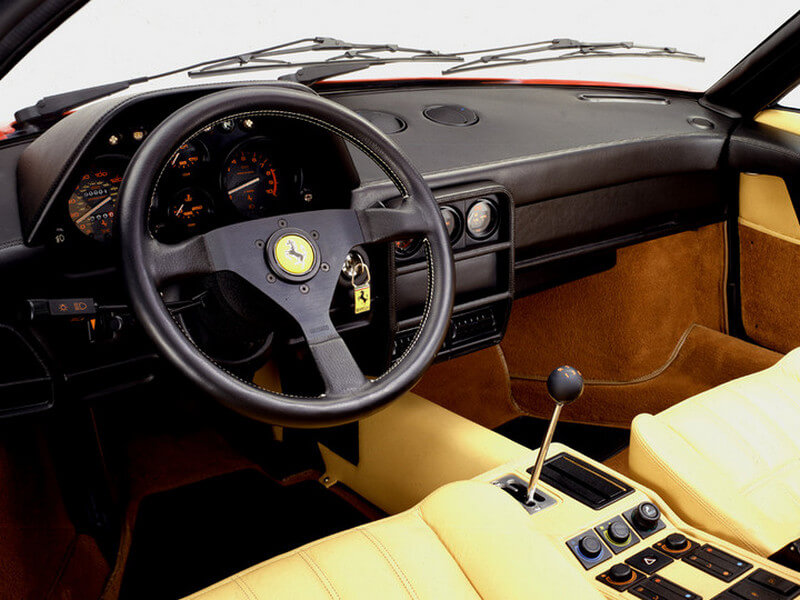

Interior: A Modernized Cockpit
Step inside the 328, and you’d immediately notice the difference from the 308. Ferrari gave the interior a thorough upgrade. The basic layout was familiar, but the materials and finishes were much more contemporary. The seats? New stitching patterns. The dashboard? Completely reworked. Gone were the clunky analog switches and levers, replaced by touch-sensitive controls that made the 328 feel more in line with the high-tech supercars of the era.
The gauges were a big improvement, too, swapping out the white-on-black dials from the 308 for the now-iconic orange-on-black design. Not only did they look better, but they were easier to read—especially at speed, where quick glances matter. The entire dashboard and center console had a more ergonomic layout, keeping everything within easy reach and contributing to a cockpit that felt far more driver-centric.
Ferrari 328 Models: GTB vs. GTS
When Ferrari introduced the 328, buyers were given two options: the GTB (Gran Turismo Berlinetta) and the GTS (Gran Turismo Spider). At a glance, they might look alike, but these two versions offered completely different experiences, catering to different types of drivers.
Ferrari 328 GTB: The Purist’s Choice
The GTB was the hardtop version, and for driving purists, this was the one to get. With its fixed roof, the GTB had a more rigid structure, which meant it handled with greater precision—especially when pushing it hard through corners. The extra stiffness made it lighter and sharper than the GTS, giving it a slight edge in terms of performance, particularly on a track or winding road.
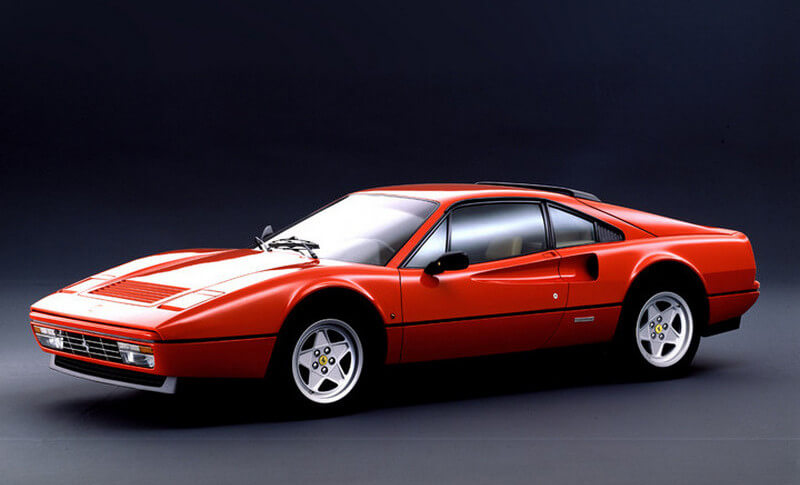

Both models shared the same 270 horsepower V8 engine, so power was identical, but the GTB’s stiffer chassis allowed it to handle high-speed driving and quick directional changes with a bit more finesse. For those who valued razor-sharp feedback and control over anything else, the GTB was the ultimate choice.
Ferrari 328 GTS: The Targa Experience
Meanwhile, the GTS was for those who craved the freedom of open-top driving. It featured a removable Targa roof, allowing drivers to take in the wind, the sun, and the glorious, unfiltered roar of that V8 engine. For many, this made the GTS the more desirable option—perfect for weekend drives down scenic routes or just soaking in that Ferrari soundtrack in all its glory.
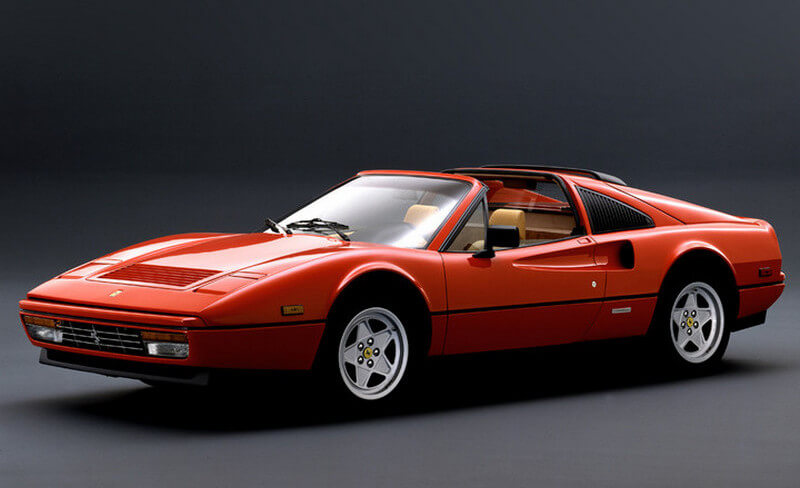

However, the GTS came with a trade-off. The removable roof meant it didn’t have the same structural rigidity as the GTB, which could lead to a bit of body flex when driven aggressively through corners. But for most drivers, the slight sacrifice in handling was more than worth it for the topless Ferrari experience.
GTB vs. GTS: A Collector’s Perspective
From a collector’s standpoint, the GTB has a unique edge—rarity. Ferrari produced just 1,344 GTBs between 1985 and 1989, with only 130 made in right-hand drive. This scarcity has made the GTB highly desirable among Ferrari enthusiasts, particularly those who prioritize sharper handling and exclusivity.
On the other hand, Ferrari produced 6,068 GTS models, making it the more popular version during its production run. The Targa-top design drew in more buyers, making the GTS easier to find on the market today.
As a result, GTBs often fetch around $50,000 more than GTS models at auctions simply because of their rarity. However, for those looking to actually drive their supercar—rather than keep it in a climate-controlled garage—the GTS offers an accessible entry into Ferrari ownership with all the thrill of a V8, plus the added bonus of driving with the top off.
Ferrari 328’s Role in the V8 Supercar Legacy
The Ferrari 328 wasn’t about fireworks or dramatic headlines. No, it was more like a masterclass in refinement. Building on the foundation laid by the 308, the 328 was the bridge between Ferrari’s raw, mechanical past and its sleek, tech-filled future. It didn’t shout for attention, but its role in Ferrari’s V8 story was crucial—because sometimes, evolution is just as important as revolution.
Perfecting the Formula
Ferrari didn’t need to reinvent the wheel with the 328. The 308 had already nailed the basics—mid-engine, V8, sleek styling—so the 328 was about fine-tuning. A little more power here, a bit more refinement there. With the 3.2-liter V8, Ferrari squeezed out more performance, but crucially, it did it without compromising that signature Ferrari feel.
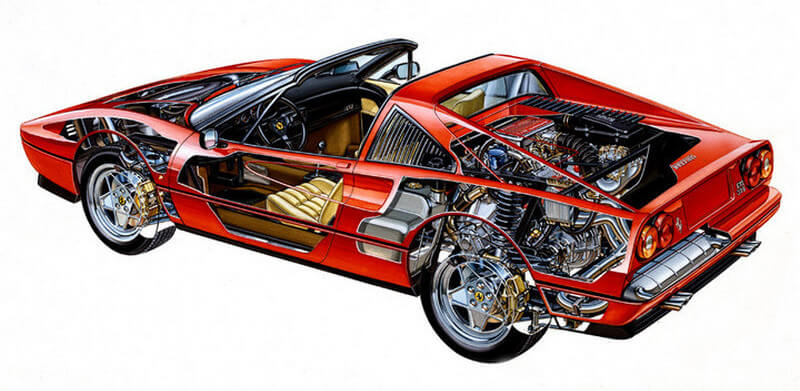

The real trick? Making the 328 faster and more reliable while still meeting stricter emissions regulations in the mid-1980s. Not many supercars of the era could do both, but Ferrari managed to thread the needle. The 328 proved that Ferrari’s V8 formula didn’t need radical changes—it just needed a bit of polishing to keep up with modern demands.
The Last of the Analog Era and a Bridge to the Future
Here’s where things get interesting: the Ferrari 328 was the last of its kind. After this, Ferrari moved into the world of electronic aids and computerized driver assistance with the 348, leaving behind the pure, analog experience that defined the earlier V8 supercars. The 328 was a car for drivers—no electronic nannies, no safety nets. Just you, the car, and your ability to tame it. Every twitch of the steering, every shift of the gear, it all felt personal. And it was brilliant.
Yet, while the 328 was the final chapter in Ferrari’s analog story, it also laid the groundwork for what came next. It showed that Ferrari could offer breathtaking performance without sacrificing reliability, maintenance, or daily usability. In doing so, it set the stage for future Ferraris, proving that modern technology didn’t have to dilute the driving experience.
The 328’s Influence on Future Models
The 328 didn’t just wave goodbye to Ferrari’s past—it gave a cheeky nod to the future. Its focus on usability and reliability became a blueprint for what came next. The 348, which followed, took the lessons learned from the 328 and added a touch of modern flair. Then came the 355 and the 360 Modena, each building on the foundations laid by the 328—combining raw power with more comfort and technology, making Ferrari’s V8 supercars more accessible to a broader range of drivers.
The 328 set the bar for what a Ferrari V8 should be: fast, beautiful, and thrilling, but also a car you could drive regularly without needing a team of mechanics on speed dial. That balance of excitement and practicality would shape Ferrari’s V8 supercars for decades, right up to the modern F8 Tributo.
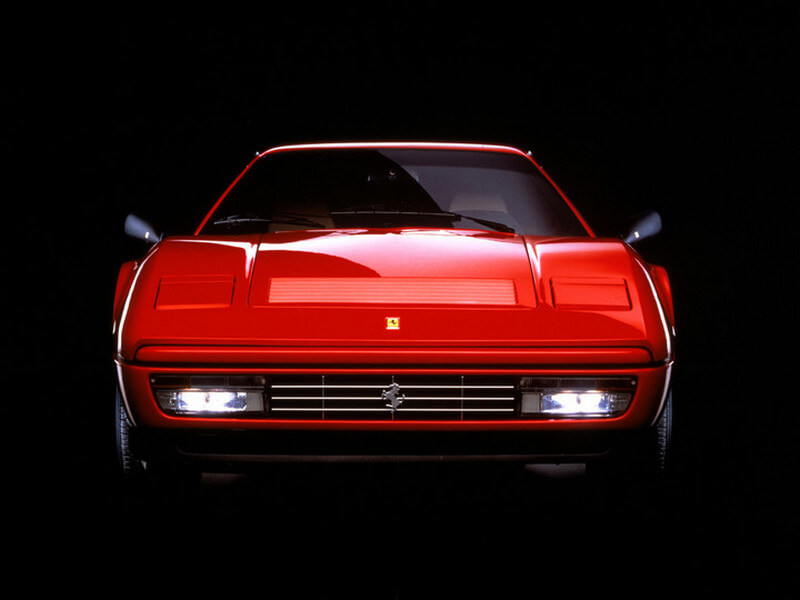

The Ferrari 328: A Supercar That Got It Right
The Ferrari 328 wasn’t the flashiest, the most powerful, or even the most groundbreaking Ferrari ever made. But here’s the thing: it didn’t need to be. It was a car that simply got everything right. In a world where supercars often go to extremes, the 328 struck the perfect balance. It wasn’t just about raw speed or radical innovation—it was about creating a machine that could excite, thrill, and still be driven without constant trips to the garage.
And that’s the genius of it. The 328 wasn’t chasing trends or trying to outdo rivals with over-the-top performance figures. It was Ferrari knowing exactly who they were and what it did best—making cars that put the driver at the center of the experience. It was a supercar for people who loved driving, not just showing off.
In the end, the Ferrari 328 was a masterclass in evolution, proving that you don’t need to rewrite the rulebook to build an icon. Sometimes, you just need to perfect the formula. And Ferrari did.
